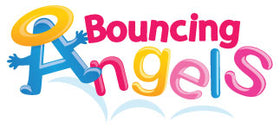Inflatable bounce houses have become a staple at children's parties and events, offering endless fun and excitement. However, ensuring the safety of young adventurers while they bounce to their hearts' content is paramount. As the largest inflatable bounce house manufacturer, we understand the importance of safety, and in this guide, we'll provide you with valuable tips and guidelines to keep kids safe at bounce house parties.
1. Choose Commercial-Grade Inflatables
The first step in ensuring safety is to invest in commercial-grade inflatable bounce houses. These are designed with safety in mind, featuring reinforced seams, high-quality materials, and sturdy construction. At [Your Company Name], our products are rigorously tested to meet industry safety standards, giving you peace of mind knowing you're providing a safe environment for kids.
2. Proper Setup and Anchoring
Proper setup is critical to ensuring the stability and safety of inflatable bounce houses. Follow the manufacturer's instructions for installation and anchoring. Secure the bounce house to the ground using sturdy stakes or weights to prevent it from tipping or moving during use, especially in windy conditions.
3. Supervision is Key
One of the most important safety measures is adult supervision. Always have trained staff or responsible adults present to monitor the bounce house during the event. They should ensure that children follow the rules and guidelines for safe play and intervene if any unsafe behavior is observed.
4. Establish Safety Rules
Before children start bouncing, establish clear safety rules and guidelines. These may include rules about the maximum number of children inside the bounce house, no climbing on the walls or netting, and no rough play. Make sure parents and caregivers are aware of these rules as well.
5. Age and Size Restrictions
Consider age and size restrictions when renting or using bounce houses. Some inflatables are designed for specific age groups, so ensure that children are matched with bounce houses appropriate for their age and size. Mixing different age groups in the same inflatable can pose safety risks.
6. Shoe Removal and Empty Pockets
Before entering the bounce house, children should remove their shoes, eyeglasses, and any sharp or loose objects from their pockets to prevent injury or damage to the inflatable. Socks are often recommended for added grip and comfort.
7. Hydration and Rest Breaks
Encourage children to stay hydrated by providing water and scheduled rest breaks. Bouncing can be physically demanding, and ensuring kids take breaks can help prevent overheating and exhaustion.
8. Weather Considerations
Keep an eye on the weather forecast. Inflatables should not be used during inclement weather, such as rain, strong winds, or thunderstorms. In such cases, deflate and secure the bounce house to prevent accidents.
9. Regular Maintenance
Regularly inspect and maintain your inflatable bounce houses. Check for wear and tear, clean them as needed, and repair any damage promptly. Proper maintenance ensures the longevity and safety of your equipment.
10. Emergency Preparedness
Have an emergency plan in place in case of unexpected situations. This includes knowing how to quickly deflate the bounce house if necessary and having a first-aid kit on hand for minor injuries.
By following these safety guidelines and prioritizing the well-being of children, you can create a safe and enjoyable experience for all at your bounce house parties. Remember, safety should always be the top priority, and with the right precautions in place, bounce houses can provide hours of fun while keeping everyone protected.

